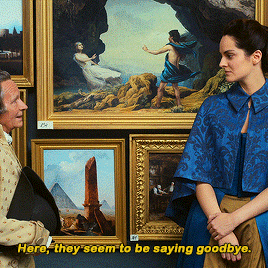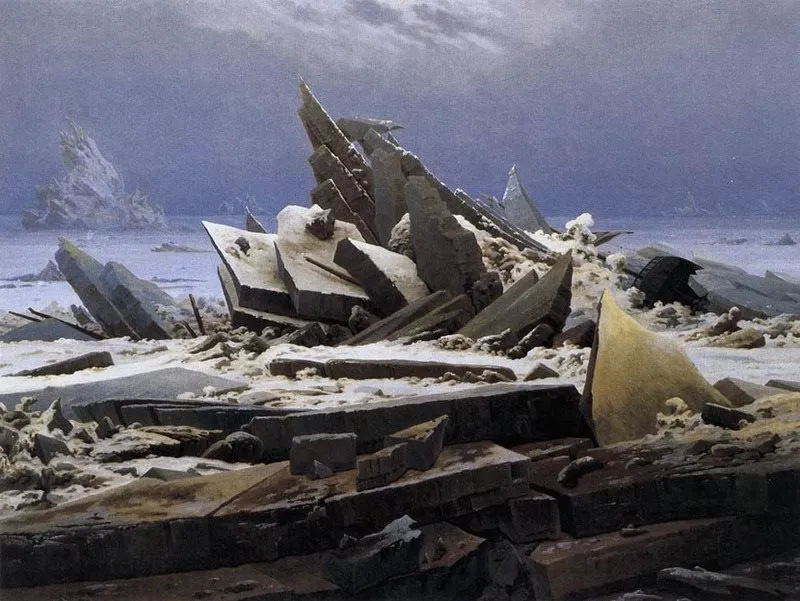A formal-aesthetic analysis of ''Portrait of a lady on fire''
- Diego Cano Gómez
- Sep 15, 2022
- 3 min read
By Diego Cano Gómez
Introduction
Portrait of a lady on fire is a film about the development of a romantic interaction between two women depicted through an arragement of symbolisms and allegories that tell the story from an emotional and psychological point of view, giving a big importance to the study of facial expression and the ''Lacanian gaze''. The film is directed by Céline Sciamma, starring Noémie Merlant and Adèle Haenel.
Semiotic analysis
During the film a set of symbols appear in order to predict the fate of the couple.
The story about the two women, is based on a reinterpretation of the myth of Orpheus and Eurydice, made by the characters themselves during the film, formulating that it was Eurydice who made Orpheus turn around, giving the power of decision to the woman instead of the man, and focusing on Eurydice's point of view, who represents Héloïse. It is Eurydice who tells Orpheus to turn around in order for him to have the memory of her during the limited time they've had together, because she knows, she is already doomed. The methapor comes alive when Marianne is going out the front door for the last time and in a brief moment Héloïse teels her to turn around while she already has her wedding dress on, which is another symbol that signifies an inscapable fate.
The image of Héloïse burning into flames is the moment Marianne realises that, like a burning candle, their time is limited, just like the tragic Greek myth.
Composition
In terms of composition, the frames in the film give a really big importance to depict the relationship linking characters by placing a range of spatial distance in between them.
This can be seen through the constrasts between interactions, when the mother and Marianne are talking, the characters are always filmed from opposite points of view, creating a formal setting.
On the other hand, the two main characters are, almost from the start of the film, placed in the same frame very close together, creating a setting of intimacy, only distancing each other when painting or when going through moments of fate realisation or stress, like when Marianne tells Héloïse that she is actually is a painter.
The film also places very big attention to the study of facial expressions through the use close-ups, specially with Héloïse, as Marianne is defining Hëloïse own identity with the gaze she´s placing on her, coming to live in physical terms with how is she going to depict her in her portrait. It is a representation of how our own identity is defined by the gaze of others, a theory developed by Jaques Lacan.
Marianne is horrorized when she realizes that she's objectifying Héloïse and not portraying her, she realizes that finishing the portrait means capturing her essence and giving her away to other.
Genre study
The movie is set in 18th century France, so it could be called a historical drama even though the importance of the plot is not placed on the time, but rather on the romantic story of the women.
It fits really well with the idea of romance at the time as something tragic and as an impossible love, a tendency started by ''The sorrows of young Werther'' (Goethe, 1779).
Narrative analysis
The narrative is centred around the relationship between the main characters, divided in phases. The first phase serves as an introduction to the charcaters and the setting, which is probably the longest part in the film. After that the characters start developing new types of bonds between them, either romantic like Hëloïse and Marianne, or of friendship, like with Sophie. After the main characters reach the peak of their relationship, the tragic outcome starts to take shape until the final moment of farewell.
This story is told in two planes, one that follows the Greek myth and another one which is the one we empirically see. This two planes cohexist during the whole film, but it is only during certain scenes that they meet at an intersection and are visible at the same time, the best example is when Marianne goes out the front door for the last time.
In terms of chronology the main plot of the film acts as a long flashback of the current life of Marianne, after this ends, we go back to the present where Marianne ''visits'' Héloïse one more time.
Aesthetic analyisis
In terms of aesthetic, the film is a constant allegory to Romanticism in connection with its ideas and its art.
The scenes merge the enormous force of nature and more importantly, causality, with the triviality of the characters lives, showing us how small they are in contrast to nature, like German and English Romanticism do. Giving us an introspective view on the concept of the sublime.
Paintings by William Turner and Caspar David Friedrich























Comments